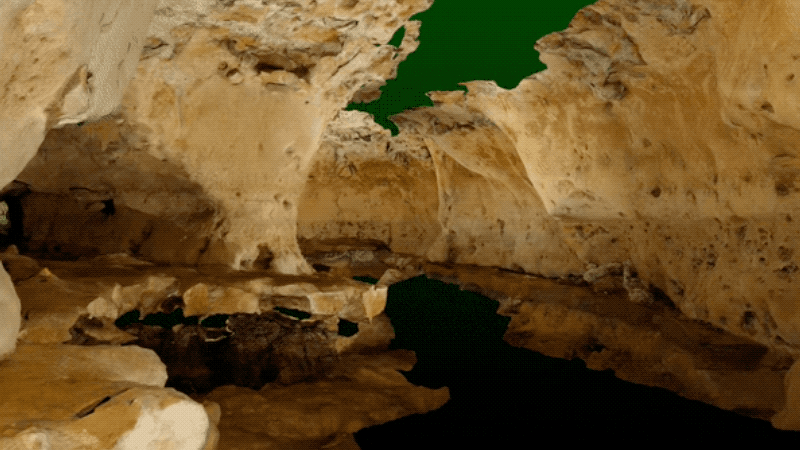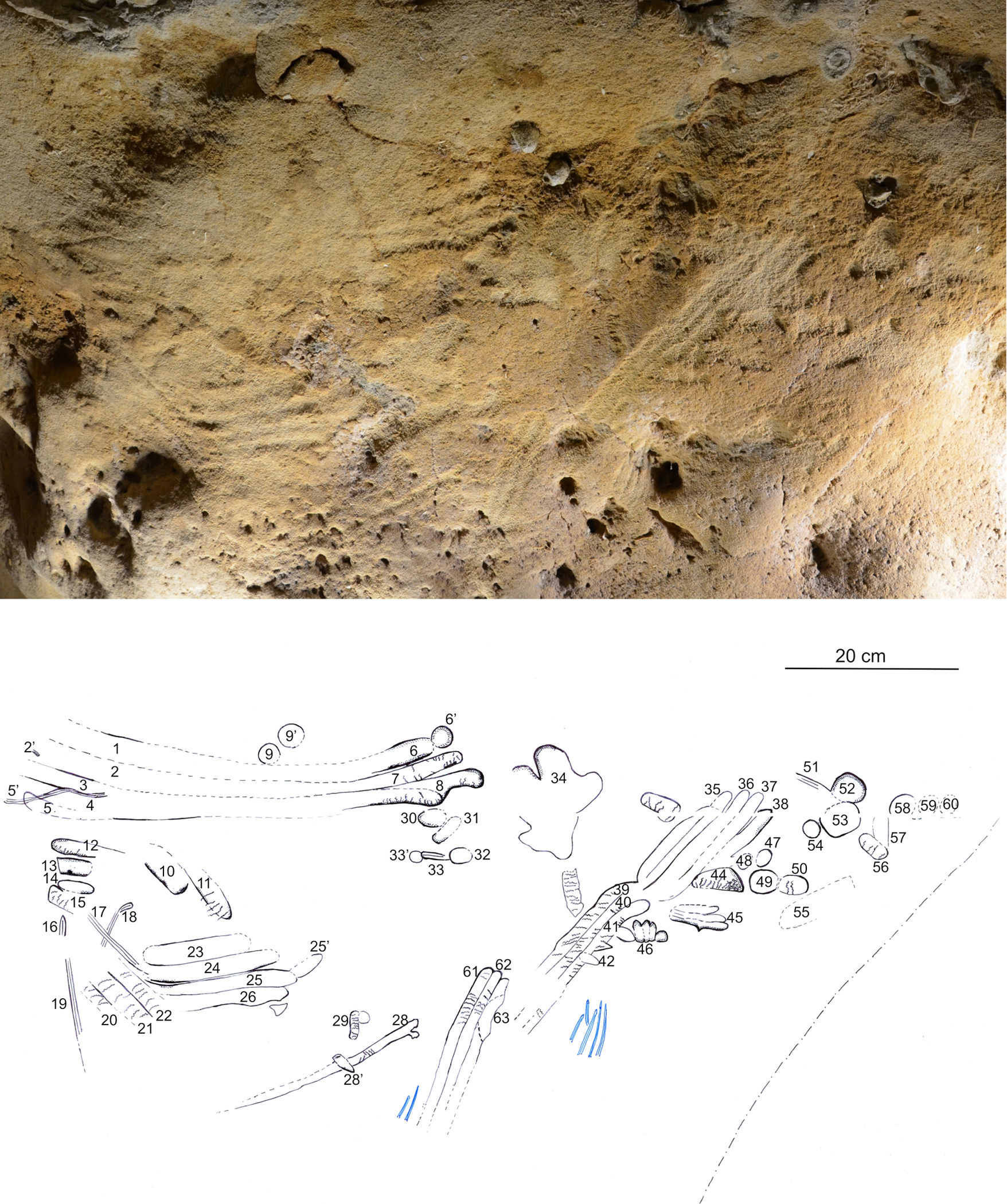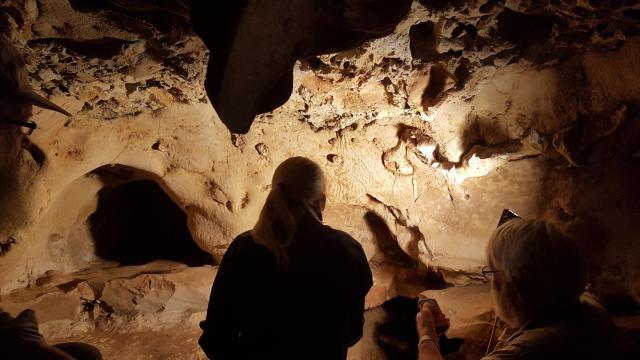It’s now consensus that Neanderthals were complex, social cousins of Homo sapiens that disappeared from the Earth around 40,000 years ago. But our lost relatives just became more complex, with the discovery of ancient cave engravings in France that appear to be their handiwork.
The engravings sit in La Roche-Cotard, a cave about 20 kilometers west of Tours. The figures — which are comprised of parallel lines made by fingers dragged across the cave wall in a number of patterns — predate Homo sapiens’ arrival in the region, leading a team of researchers to believe they were created by Neanderthals (Homo neanderthalensis). The team’s research was published this week in PLoS One.
“These panels are made with highly applied, structured lines,” said Jean-Claude Marquet, an archaeologist at the University of Tours, in an email to Gizmodo. “The cave was closed 57,000 years ago, and sapiens had not yet arrived in Western Europe, so these engravings can only be attributed to Neanderthals.”

Neanderthals were our stocky, barrel-chested, big-browed cousins. Once imagined as backwards and stupid, increasing piles of evidence indicate that they were every bit as complicated and innovative as modern humans. They worked together in communities, sharing food, hunting in groups, and even practiced healthcare. They started and used fires, just like our ancestors.
In fact, Neanderthals are our ancestors; it appears that Neanderthals did not go extinct outright, but rather were subsumed into the gene pool of Homo sapiens as our two species interbred.
In any case, Neanderthals disappeared around 40,000 years ago, leaving behind remains for researchers to find — genetic quirks and perks in modern humans that scientists can now trace back to our lost cousins, and — as evidenced in the new work — very ancient cave engravings.

La Roche-Cotard was sealed by infilling around 57,000 years ago, well before Homo sapiens arrived in the area, based on optically-stimulated luminescence dating of the cave’s sediments.
Since Neanderthals were the only known hominins in the area at that time, it goes to provide that the finger markings are theirs. That makes the La Roche-Cotard markings the oldest known artwork made by the species. The ceiling for the markings’ age is about 75,000 years old, the researchers said.
“To me it was only a matter of time before evidence for Neanderthal cave art would be found in France. We have strong evidence for Neanderthal use of pigments, and non-figurative cave paintings at multiple sites in Spain, so it is likely they were engaged in similar behaviour across the whole of their range,” said Alistair Pike, an archaeologist at the University of Southampton, in an email to Gizmodo. “The ‘finger flutings’, a kind of engraving made by pressing and dragging the fingers onto soft surfaces (e.g. clay or soft carbonate deposits), are convincing examples of art.”

“For complex caves this can be controversial as there may yet be undiscovered entrances that were blocked at different times,” Pike added, noting that the relatively small La Roche-Cotard was sealed shut. “So I’m pretty convinced this art was the work of Neanderthals.”
What does it mean for this to be found? Ancient art by Neanderthals and Homo sapiens has been found before, even in the same cave. Last year, over 1,000 artworks spanning 50,000 years were found in Spain’s Cueva de Ardales.
But the works in La Roche-Cotard show Neanderthals were definitely making figures on their own time, without interacting with Homo sapiens. Even if they were eventually absorbed into our species, they were creative in their own right at the time.
Marquet told Gizmodo in an email that there’s more analysis that needs to be done in the cave, saying “different panels, one large, another drawn with a tool and other simpler panels are also to be studied.”
Thanks to developments in genetics and imaging, scientists are making new insights into our ancient past: who made up the genus Homo, how those individuals interacted, and when and how they developed their own technologies.
More study of caves around the world, from France to Indonesia, will not only clarify our genus’ geography through time, but also its inventions.
